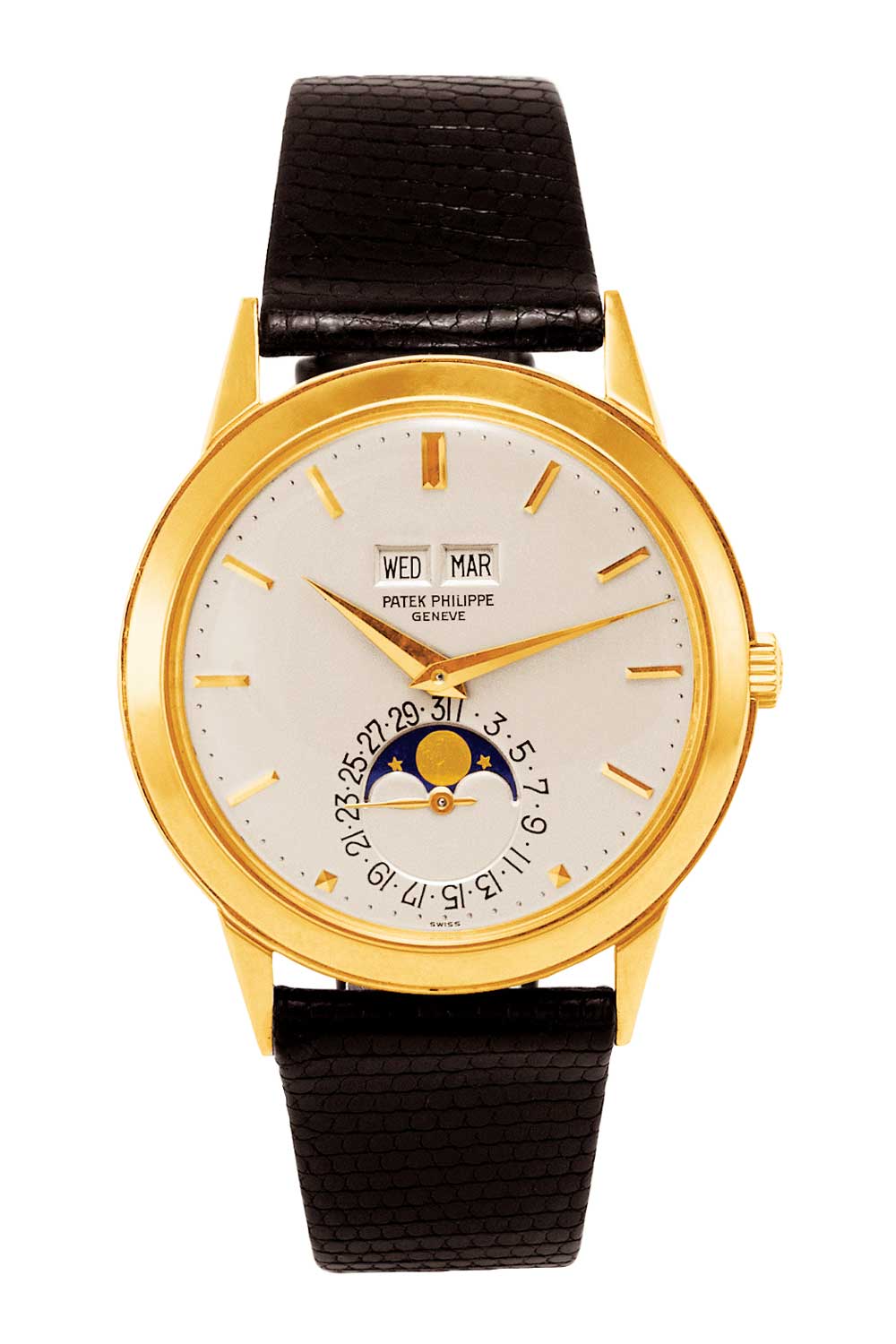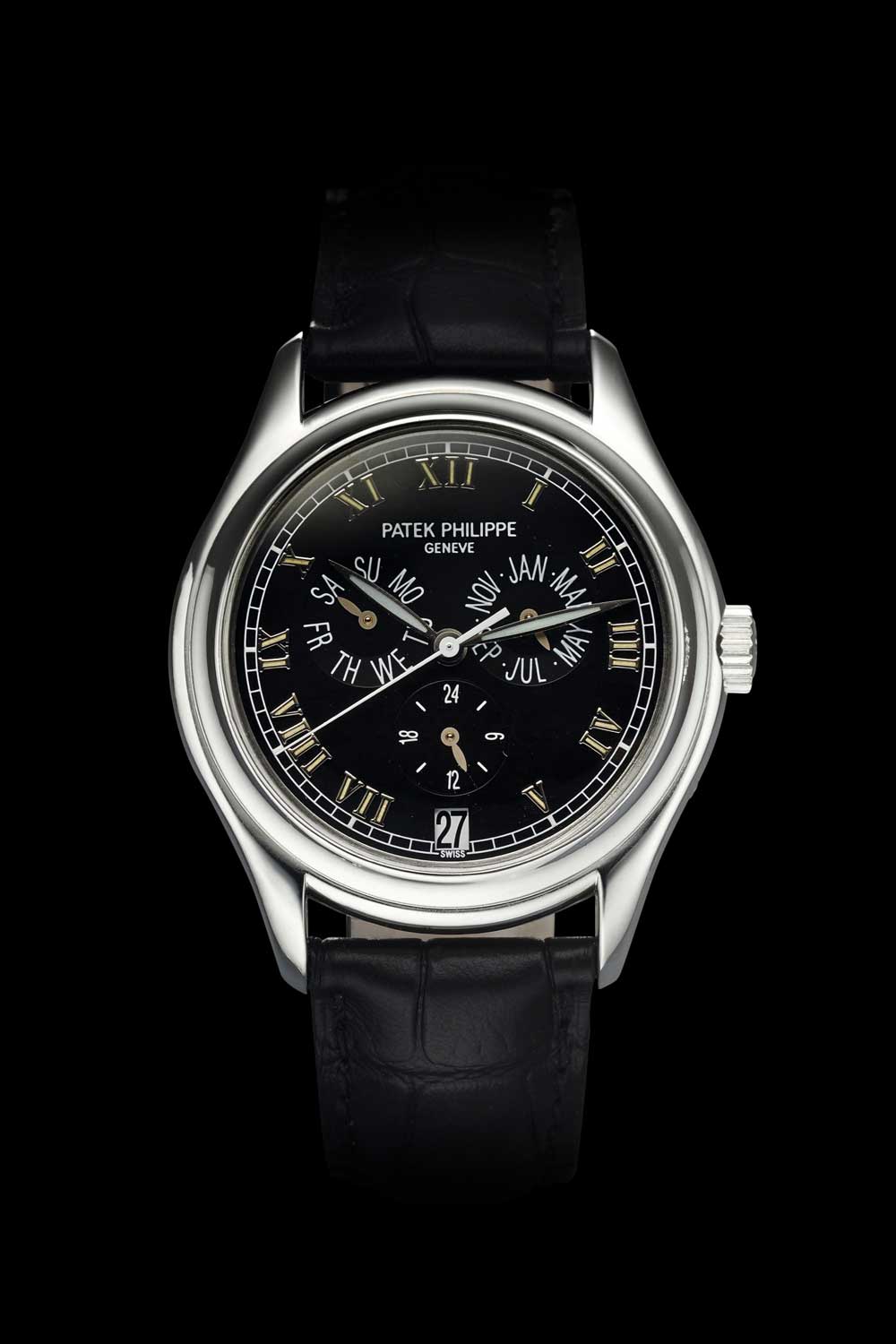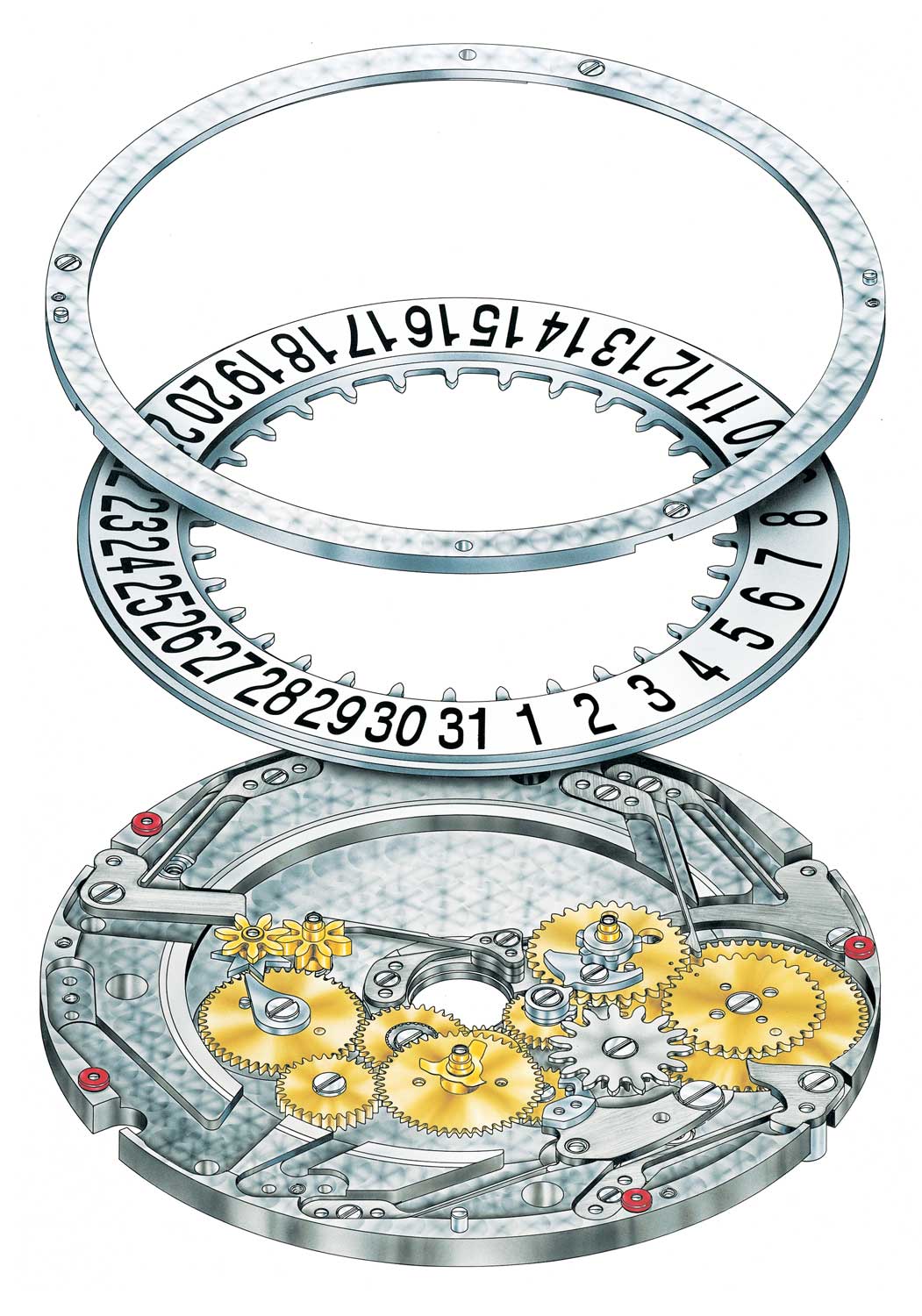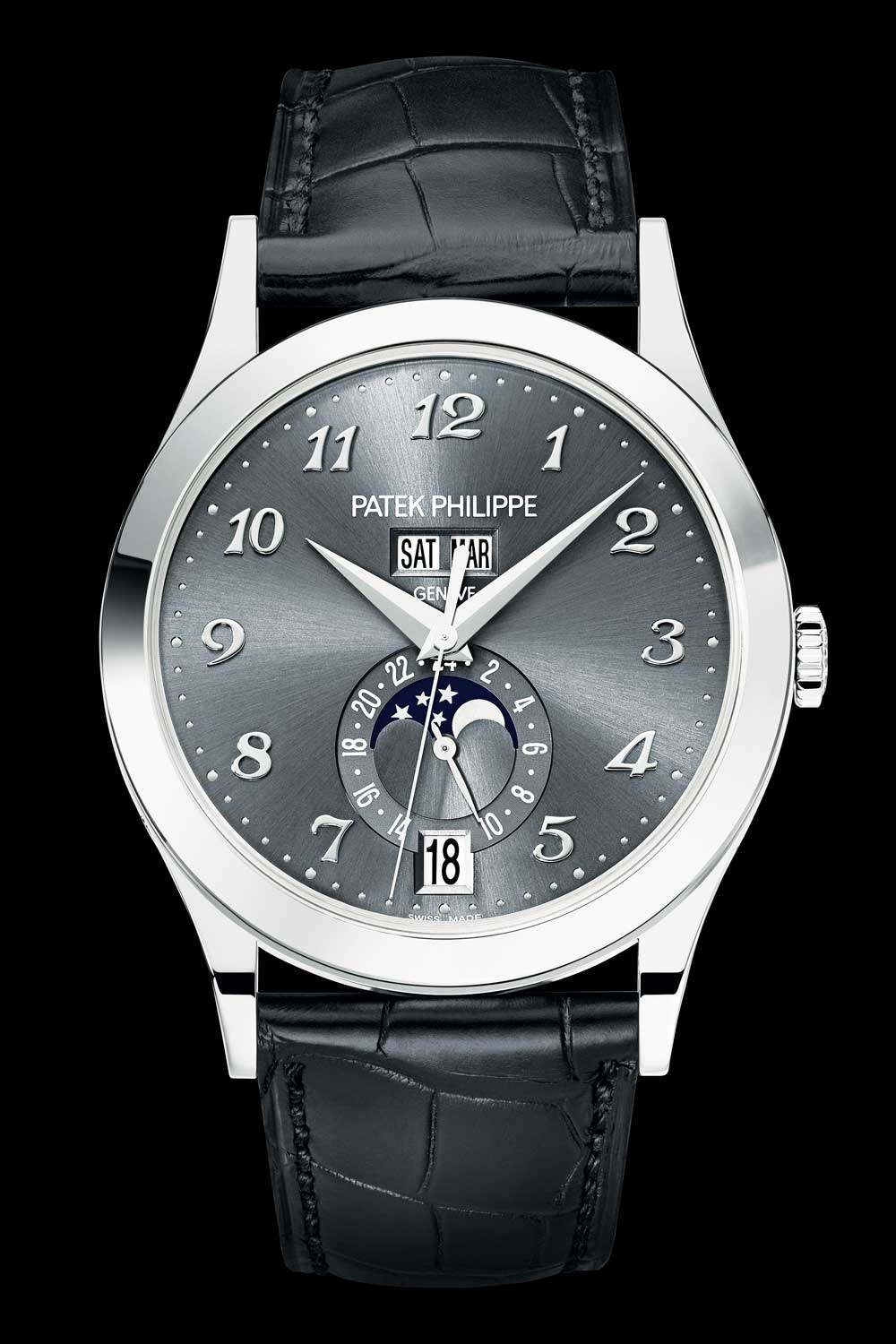Patek Philippe
Mind the Gap
The only such instance that can be proposed (or at least the only one that I can think of), occurs in the realm of horology. A calendar complication, which was given to the world by Patek Philippe’s Advanced Research division just two decades ago.
This is the story of the annual calendar, which celebrates its 20th anniversary this year. Patek Philippe actually celebrates two major anniversaries in 2016, however, we’ve been asked to remain patient for news on the other one later in the year.
It’s quite odd when you think about it but, the annual calendar, which we consider to be a staple complication in high horology today, came into being only in the 1990s. In comparison, the perpetual calendar, which is a far more complex calendar complication, was put into a wristwatch by Patek Philippe long before in 1925.

The legendary Patek Philippe Perpetual Calendar ref. 3448
The Advent
It wasn’t until 1992, when Philippe Stern suggested that there needed to be something to offer to his customers in the gaping space between a perpetual calendar and a simpler day-date timepiece that watchmakers at Patek Philippe set out to create the annual-calendar complication.
Its principle is quite simple — it displays the month, day and date, and is able to discern months with 31 days versus 30 days and only requires the wearer’s intervention to correct the date display when February gives way to March. The perpetual calendar, on the other hand, is able to account for the progression of February to March autonomously, and even account for the extra day in leap years.
Patek had to conduct two years of research on the annual calendar before the necessary patents could be filed to protect the new complication. And finally yet another two years later, in 1996, it was able to unveil the first wristwatch to contain the annual-calendar function: the ref. 5035.
The ref. 5035 had a 37mm precious-metal casing, fitted with the cal. 315S QA 24H (3Hz) movement. The genius of the movement within was that the annual-calendar complication was created as a module. Meaning to say that Patek’s watchmakers had created the possibility for themselves to easily incorporate their new complication into other existing movements. The complication was also executed completely using wheels — no levers or rakes here; hence the dependability of the module became a huge plus point.
What you have in the mechanism is a sequence of wheels that convert the initial time mechanism into the date, day and month. A primary month wheel, sitting atop the 31-tooth date wheel, differentiates between the alternating month lengths. The shorter months are accounted for with the tall lobes and the longer months with the gaps. A rocker cam, affectionately called the “dolphin” cam, which sits next to the month wheel, is what initiates a date jump on the date wheel from the 30th of a short month, to the 1st of the month that follows. The month wheel and the “dolphin” cam were essentially the subject of the patent that Patek applied for, back in 1994.
The resultant indications on the ref. 5035’s face were presented in a tri-compax formation with days and months side by side on subdials on the upper half, and a 24-hour subdial paired with a date window at six o’clock. It didn’t take long, however, for the face of the annual-calendar watch to evolve to take on other indications — this, again, thanks to the complication’s modularity.

The first annual-calendar watch produced by Patek Philippe, the ref. 5035
The Advancement
In 1998, Patek gave the world the ref. 5036, which did away with the ref. 5035’s 24-hour counter in favor of a moonphase display and added a power-reserve indicator at 12 o’clock. 2004, though, saw the first complete facelift of the complication with the annual calendar being presented in a tonneau case. This was the Gondolo Calendario ref. 5135. It had a newly created caliber, the 4Hz cal. 324 QA that displayed the month, day and date in three apertures across the top of the watchface.
The next facelift on the annual calendar came with the 38.5mm ref. 5396, in 2004. It presented the complication in the style of old triple calendars, that is, the day and month in three letter representations through apertures placed right above the central pinion. The date window at six o’clock remained. The same year also saw the release of the ref. 5960, which incorporated a self-winding chronograph.
In 2010, Patek incorporated the annual-calendar function for the first time into the Nautilus, yet another demonstration of the module’s versatility. But the greatest leap perhaps came in 2011, which saw the launch of a regulator-style timepiece with yet another layout variant of the complication. This was the ref. 5235G, which had a larger 40.5mm white-gold case fitted with the ultra-thin self-winding cal. 31-260 REG QA.

Calibre 315S QA 24H (3Hz) movement

The annual calendar mechanism contained within the cal. 315S QA 24H (3Hz) movement
The Anniversary
Five years on, now in 2016, as Patek celebrates the 20th anniversary of what it’s calling its best-selling complication to date, two renewed versions of their ref. 5396 were presented at Basel, in a decidedly elegant 38.5mm case (rose and white gold).
The execution of the two new iterations are highly reminiscent of the legendary ref. 3448 and ref. 3450 Perpetual Calendars, save for the solid-18K-gold applied Breguet numerals and the 24-hour subdial at six o’clock, paired with the date indication. Otherwise, the day and month are displayed through apertures on the upper half of the dial along with the moonphase indicator, again at six o’clock. Hour, minute and the running seconds thereafter are mounted onto the central pinion.
Twenty years on, as the annual calendar continues to garner renewed fascination and Patek themselves continue to express the complication in ever-varied silhouettes, it remains to be seen just where we will find the complication in coming years. Especially today, on the occasion of the 20th anniversary of Patek’s annual calendar, which also happens to be the year when Patek loses its patent protection on the mechanism. Things are, without doubt, about to get interesting. As it is, plenty of other brands have already picked up on the concept of the 1996 ref. 5035 and came up with their own versions of annual-calendar timepieces.
But where Patek is concerned — the one who had enough vision to point out the lack of this brilliant annual-calendar complication late in the 20th century, when the preceding concept of the perpetual calendar had existed long before, since the 16th century — it is quite safe to say that we can continue to expect the company to point out even more gaps and create even more innovations in horology. How can we be so sure? Simple, really: we are, after all, talking about Patek Philippe.

The new for 2016 Annual Calendar, ref. 5396










